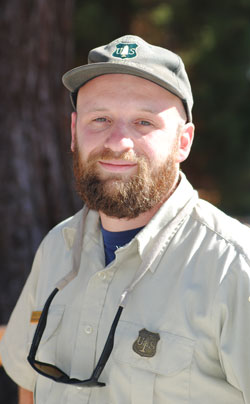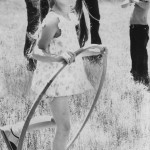Charles Wentz is the new forester for the San Jacinto Ranger District. He arrived in March and within months confronted a major fire in the local forest.
Kayanna Warren, his predecessor as district forester, was an Oregonian who went to school in the East. Wentz is from New Jersey and went to school at the Universit

y of Montana. There he studied forest operations, applied restoration and wildland fire science.
After graduating, he began his U.S. Forest Service career at the Boise National Forest, east and northeast of Boise, Idaho.
After arriving, Wentz said one of his biggest surprises was, “How friendly people are here.”
Idaho is home to many anti-government individuals, “So it’s nice to receive ‘thank you’ for what I do,” he said smiling.
Although from New Jersey, he grew up in the southern coastal area — commonly known as the Pine Barrens. Wentz expressed gratitude for a town movie theater. “That was a nice surprise, too.”
As a forester, Wentz said his main objective as the district’s forester is vegetation management. He will be evaluating the current fuelbreaks around the community.
“Fuel reduction is not complete,” he stated. “Meaningful fuel reduction is also necessary for firefighter safety when they engage with fire.”
During the first week of the Cranston Fire, Wentz prepared many of the fire maps used by the teams, crews and media.
To many local residents, the number of trees being removed and cut since the fire seems like more than after the Mountain Fire five years ago. While Wentz was not here then, he said the rights-of-way for Caltrans and Southern California Edison need to be clear and clean.
Dead and dying trees pose a risk to the power grid. The power lines need to be protected. Immediately after the fire, ensuring the highways would not be obstructed was another priority.
Currently, the Forest Service has three large decks of logs or firewood. Permits for cutting and taking this wood for up to 10 cords are available at the district office, he said. “My hope is to get some of this wood back to the community.”
After winter, he will reassess the forest to better determine what survived and what didn’t.
“[The fire] did leave a lot trees. Don’t know what we’ll see next spring,” Wentz continued. “Some regrowth, especially grasses, but don’t know true need yet.”
Reforestation may be on the horizon, but that will depend on the extent of natural regrowth that occurs. There is a large chaparral component that evolved with the fire.
He also noted how many of the district’s staff are from the Hill and Southern California. “They know it like the back of their hand, and that’s a major benefit helping me learn the district,” he said
“I like it here. It’s a good fit, and I like the position and people,” Wentz stated. “There’s a lot of variety; never the same thing.”










